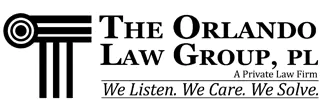
Overview
Florida is one of the most biodiverse states in the United States, ranking 7th with 4,368 known animal species. Due to this high amount of biodiversity, it is important to consider the animals that may reside on the land when purchasing property or purchasing land to build property on. If any species classified as endangered or threatened inhabits a property or piece of land, a lengthy and likely expensive process may ensue for a buyer. This includes the gopher tortoise and Florida scrub-jay. For more information about the gopher tortoise, visit our previous article titled, “The Florida Gopher Tortoise – A Slow Set-Back to Development.” The Florida scrub-jay is the only bird species that lives exclusively in Florida. These two species are both designated as “threatened” by the federal Endangered Species Act.
About the Florida Scrub-Jay
The Florida scrub-jay is a small blue and gray songbird species endemic to Florida. It is estimated that there are only 7,700-9,300 remaining Florida scrub-jays. Adult scrub-jays have a blue tail, head, and wings and a gray belly. Unlike blue jays, the Florida scrub-jay does not have any black markings or a crest.
The scrub-jays mate for life and form long-lasting pair bonds. They are cooperative breeders, meaning that the offspring of the breeding pair will typically stay for an additional year in order to help raise other young and defend the nest.
The Florida scrub-jay typically resides in dry, low-growing scrub oak in sandy soils. It can be found year-round in parts of Central and Southeast Florida, typically along old sand dunes near the coast and sandy deposits along rivers.
A Threatened Wildlife Species
Federally, the Florida scrub-jay is protected by both the U.S. Migratory Bird Treaty Act and by the federal Endangered Species Act. In Florida, the scrub-jay is protected as a threatened species under Florida’s Endangered and Threatened Species Rules. The primary threat to the bird is habitat destruction and fragmentation due to land development. The scrub-jay population has decreased by up to 90% in the past century due to these threats.
Under the Fish and Wildlife Conservation Commission’s Florida Endangered and Threatened Species List, Section 68A-27.003, the scrub-jay, its nest, and its eggs are all protected. Due to this protection, special permits are necessary to build in a scrub-jay zone. It is necessary to obtain a Federal Incident Take Permit from the U.S. Fish and Wildlife Service (USFWS) in order to build in an area with scrub-jays. To obtain the permit, the USFWS will analyze the land survey and building plans to determine if the scrub-jay will be impacted. If they determine that the Florida scrub-jay will be impacted, strategies for avoidance and minimization of impact will be required in order to obtain the permit. Typically, a 12-month lead time for permitting and mitigation will be necessary before clearing of the property is permitted. Additionally, due to its special habitat, Florida scrub-jays require regular prescribed burns performed by state and local officials.
Developers, builders, or landowners who develop within the protected area of a Florida scrub-jay or its nest without a permit may be in violation of the Endangered Species Act. Under the “Penalties and Enforcement” section of the Act, 16 U.S. Code § 1540, violation of the Act is a Class “A” misdemeanor, punishable by up to 1 year in jail, and/or up to a $100,000 fine for individuals or up to $200,000 for corporations. Civil penalties range up to $25,000. Additionally, violations of the Migratory Bird Treaty Act are punishable by fines of a maximum of $5000 and or imprisoned for not more than six months for individuals, or $10,000 fine for an organization.
Avoiding Development or Property Issues Involving Florida Scrub-Jays
If you buy property that is in a scrub-jay zone, you are likely going to face a potentially costly and lengthy legal process. You will be required to get special permits from the United States Fish and Wildlife Service, along with permission before any changes are made to the lot.
It is important to start this process early on, as it may take up to a year before you receive approval on your permits. It is important to thoroughly go through these steps; however, because without them you face significant fines and potential legal ramifications.
Update: Developing or Purchasing Land Inhabited by Gopher Tortoises in Florida
Wildlands Conservation is a local 501(c)(3) non-profit conservation organization based out of Tampa, Florida. Their team is composed of ecologists, educators, and land managers who are focused on conserving lands for wildlife for generations to come. Their three main focuses are land management, research, and education.
As part of their mission to conserve lands, they offer Florida Fish and Wildlife Conservation Commission-approved training courses that meet the requirements for the Authorized Gopher Tortoise Agent permit. Their instructors are experts in gopher tortoise permitting, research, and relocation. Together, they have over 50 collective years of experience regarding gopher tortoise conservation. Their staff are also members of the Gopher Tortoise Council’s Executive Committee.
According to their website, the non-profit offers gopher tortoise permitting; surveying; mapping; capture and relocation via mechanical excavation, bucket and live trapping, and hand shovel excavation; recipient site permitting and monitoring; identification of potential recipient sites; tortoise population and vegetation monitoring; line transect distance sampling (LTDS) surveys and burrow scoping; and authorized Gopher Tortoise Agent Training Courses.
Wildlands Conservation offers these services, but they emphasize that there is no standard cost, since each project is different. The Florida Fish and Wildlife Conservation Commission provides a Gopher Tortoise Permitting Guidelines Guide, which outlines the duration and costs typically associated with permitting and removal.
For more information, visit their website at: www.wildlandsconservation.org.
A Piece of Advice in Dealing with Endangered Species in Land Development
There are free resources online through your county’s GIS mapping system in order to determine if the property you are considering purchasing is in a zone which may contain a protected species. You can also call your county’s Planning and Zoning Department if an online system is unavailable. The important thing to keep in mind throughout this process is to always plan ahead of time and have patience, as these permits and approval processes typically take around a year to complete. Remember, if you are ever in doubt that you are purchasing a property or planning to develop a piece of land which contains a protected species, it is advised to seek the assistance of a professional, and to request and complete a thorough survey of the area before you begin your project or purchase a property.
Last Updated on June 22, 2022 by The Orlando Law Group





